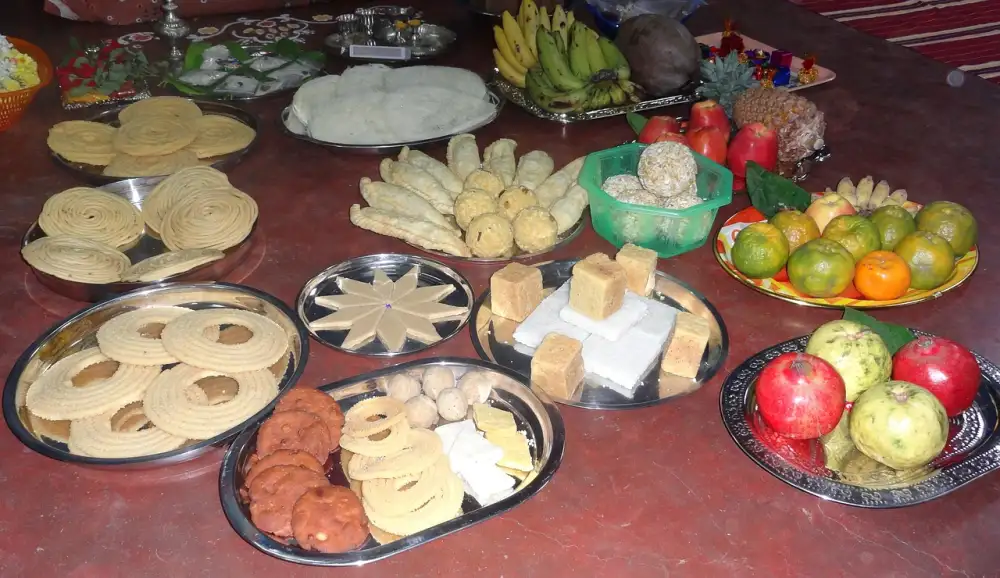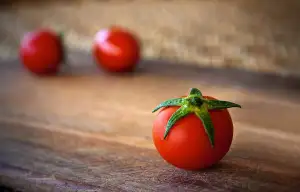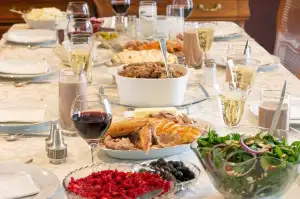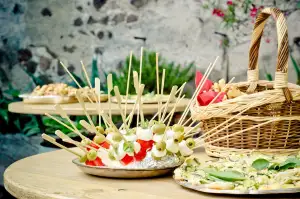Delight Your Taste Buds with Exquisite Indian Desserts: A Journey into the Sweetness of Indian Cuisine

- Introduction to Indian desserts
- Popular Indian desserts
- Traditional ingredients used in Indian desserts
- Regional variations in Indian desserts
- Health benefits of Indian desserts
- Tips for making Indian desserts at home
- Popular Indian dessert recipes to try
- Conclusion: Exploring the sweet world of Indian desserts
Introduction to Indian desserts
Indian cuisine is renowned for its rich and diverse flavors, and when it comes to desserts, it is no different. Indian desserts are a delightful combination of sweetness, aromatic spices, and unique textures that will surely tantalize your taste buds. From mouthwatering milk-based sweets to syrup-soaked delicacies, the world of Indian desserts is a treasure trove waiting to be explored. Join us on a journey into the sweetness of Indian cuisine as we delve into the fascinating world of Indian desserts. Get ready to indulge in a symphony of flavors that will leave you craving for more!
Popular Indian desserts
Popular Indian desserts are a delightful treat for anyone with a sweet tooth. These desserts are known for their rich flavors, unique textures, and intricate presentation. One of the most popular Indian desserts is Gulab Jamun, which consists of deep-fried milk dumplings soaked in a fragrant sugar syrup. Another favorite is Kheer, a creamy rice pudding flavored with cardamom and garnished with nuts. Jalebi, a crispy and syrupy pretzel-shaped dessert, is also highly sought after. Other popular choices include Rasgulla (soft cheese balls soaked in sugar syrup), Barfi (a fudge-like sweet made from condensed milk), and Rasmalai (spongy cottage cheese dumplings served in sweetened milk). Each of these desserts offers a unique taste experience that will leave you craving for more.
Traditional ingredients used in Indian desserts
Traditional Indian desserts are known for their rich and diverse flavors, which are achieved through the use of unique ingredients. One such ingredient is ghee, a clarified butter that adds richness and depth to sweets like Gulab Jamun and Gajar Halwa. Another common ingredient is khoya, a milk solid that is used in many Indian sweets to enhance their texture and taste. Other traditional ingredients include cardamom, saffron, rose water, and various nuts like almonds, pistachios, and cashews. These ingredients not only add flavor but also provide nutritional benefits, making Indian desserts a delightful combination of taste and health.
Regional variations in Indian desserts
Regional variations in Indian desserts add a unique twist to the already diverse and vibrant culinary landscape of the country. Each region has its own traditional sweets that reflect the local flavors and ingredients. In North India, you'll find popular desserts like Gulab Jamun, a deep-fried milk dumpling soaked in sugar syrup, and Gajar ka Halwa, a sweet carrot pudding cooked with milk, sugar, and nuts. Moving towards the East, Bengal is famous for its mouthwatering Rasgulla, soft cottage cheese balls cooked in sugar syrup. In South India, Payasam is a must-try dessert made with rice or vermicelli cooked in milk and flavored with cardamom and saffron. Western India boasts of delicacies like Shrikhand, a creamy yogurt-based dessert flavored with saffron and topped with nuts. And let's not forget about the rich and decadent Mysore Pak from Karnataka or the melt-in-your-mouth Malpua from Rajasthan. These regional variations highlight the diverse cultural heritage of India while satisfying your sweet tooth.
Health benefits of Indian desserts
Indian desserts not only satisfy your sweet tooth but also offer several health benefits. Many traditional Indian desserts are made using ingredients like milk, nuts, fruits, and spices, which are rich in essential nutrients. For example, milk-based desserts like kheer and rasgulla provide calcium for strong bones and teeth. Nuts used in desserts like barfi and halwa are packed with healthy fats, protein, and fiber. Fruits such as mangoes and bananas used in desserts like aamras and banana halwa offer vitamins, minerals, and antioxidants. Additionally, the use of spices like cardamom and saffron in Indian desserts provides various medicinal properties. However, it is important to consume these desserts in moderation as they can be high in sugar and calories. Enjoying them as an occasional treat can be a delightful way to indulge while still reaping some health benefits.
Tips for making Indian desserts at home
Tips for making Indian desserts at home:
1. Use authentic ingredients: To achieve the true flavors of Indian desserts, it is important to use authentic ingredients like cardamom, saffron, rose water, and ghee.
2. Balance the sweetness: Indian desserts are known for their rich sweetness. However, it is crucial to strike a balance and not overpower the dish with excessive sugar. Taste as you go and adjust accordingly.
3. Master the techniques: Many Indian desserts require specific techniques such as making a syrup or kneading dough. Take your time to learn these techniques and practice them to perfection.
4. Pay attention to presentation: Indian desserts are not only delicious but also visually appealing. Garnish your creations with nuts, edible silver leaf (varak), or colorful saffron strands to enhance their presentation.
5. Experiment with flavors: While traditional recipes are delightful, don't be afraid to experiment with different flavors and ingredients. Add your own twist by incorporating fruits, spices, or even chocolate into your Indian dessert creations.
6. Practice patience: Some Indian desserts require time and patience to prepare. Follow the recipe instructions carefully and allow enough time for soaking, chilling, or cooking to ensure the best results.
By following these tips, you can recreate the magic of Indian desserts in your own kitchen and impress your family and friends with your culinary skills!
Popular Indian dessert recipes to try
Popular Indian dessert recipes to try:
1. Gulab Jamun: These deep-fried milk dumplings soaked in sugar syrup are a must-try. Soft, spongy, and infused with cardamom flavor, they melt in your mouth.
2. Kheer: A creamy rice pudding made with milk, rice, and flavored with saffron and nuts. It's a comforting dessert that is often served during festivals and special occasions.
3. Jalebi: Crispy pretzel-shaped spirals made from fermented batter, deep-fried until golden brown, and then soaked in sugar syrup. They are best enjoyed warm.
4. Rasgulla: Soft cottage cheese balls cooked in sugar syrup until they become spongy and juicy. This Bengali sweet is light and refreshing.
5. Barfi: A fudge-like sweet made from condensed milk, sugar, and various flavors like pistachio or coconut. It's cut into squares or diamond shapes and garnished with nuts.
6. Rasmalai: Paneer dumplings soaked in thickened milk flavored with cardamom and saffron. This rich dessert is perfect for indulging your taste buds.
7. Payasam: A creamy rice or vermicelli pudding cooked in milk with the addition of jaggery or sugar. It's often flavored with cardamom or rose water.
These popular Indian dessert recipes will surely satisfy your sweet tooth and introduce you to the delightful flavors of Indian cuisine
Conclusion: Exploring the sweet world of Indian desserts
Indian desserts are a treasure trove of flavors and textures that will delight your taste buds. From creamy rice puddings to syrup-soaked pastries, each dessert is a work of art that showcases the rich culinary heritage of India.
By indulging in popular Indian desserts like Gulab Jamun, Jalebi, and Kheer, you can experience the perfect balance of sweetness and aromatic spices. These desserts not only satisfy your sweet tooth but also provide a glimpse into the cultural diversity of India.
The traditional ingredients used in Indian desserts, such as cardamom, saffron, and rose water, add a unique touch to each dish. These ingredients not only enhance the flavor but also offer numerous health benefits. Many Indian desserts are made with natural ingredients like fruits, nuts, and milk, which make them a healthier choice compared to processed sweets.
One fascinating aspect of Indian desserts is the regional variations found across different parts of the country. Each region has its own signature dessert that reflects its local flavors and traditions. Whether it's the melt-in-your-mouth Sandesh from West Bengal or the fragrant Sheer Khurma from Hyderabad, exploring these regional variations is an adventure in itself.
If you want to recreate these delightful treats at home, there are some tips to keep in mind. Pay attention to measurements and proportions while using traditional techniques like simmering and slow cooking. Also, don't be afraid to experiment with flavors by adding your own twist to classic recipes.
To get you started on your journey into the world of Indian desserts, here are some popular recipes you can try: Rasgulla - soft cottage cheese balls soaked in sugar syrup; Gajar ka Halwa - a delicious carrot-based sweet dish; and Rasmalai - spongy cottage cheese dumplings served in flavored milk.
In conclusion, Indian desserts offer a delectable experience that combines sweetness, aromatic spices, and cultural diversity. Exploring the world of Indian desserts not only satisfies your sweet cravings but also opens up a whole new dimension of flavors and culinary traditions. So, grab your apron and embark on this sweet adventure to delight your taste buds with exquisite Indian desserts.
Published: 15. 11. 2023
Category: Food



